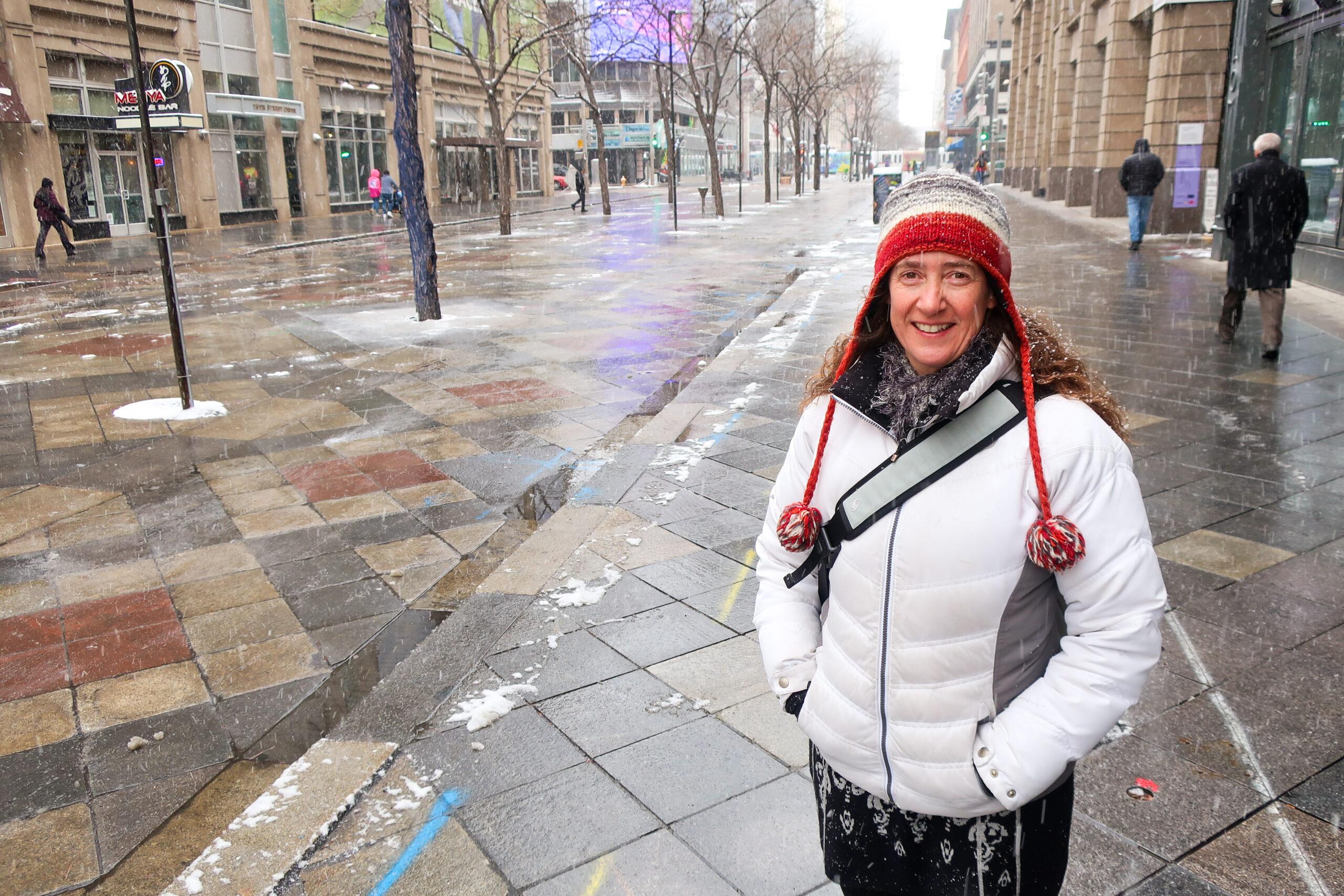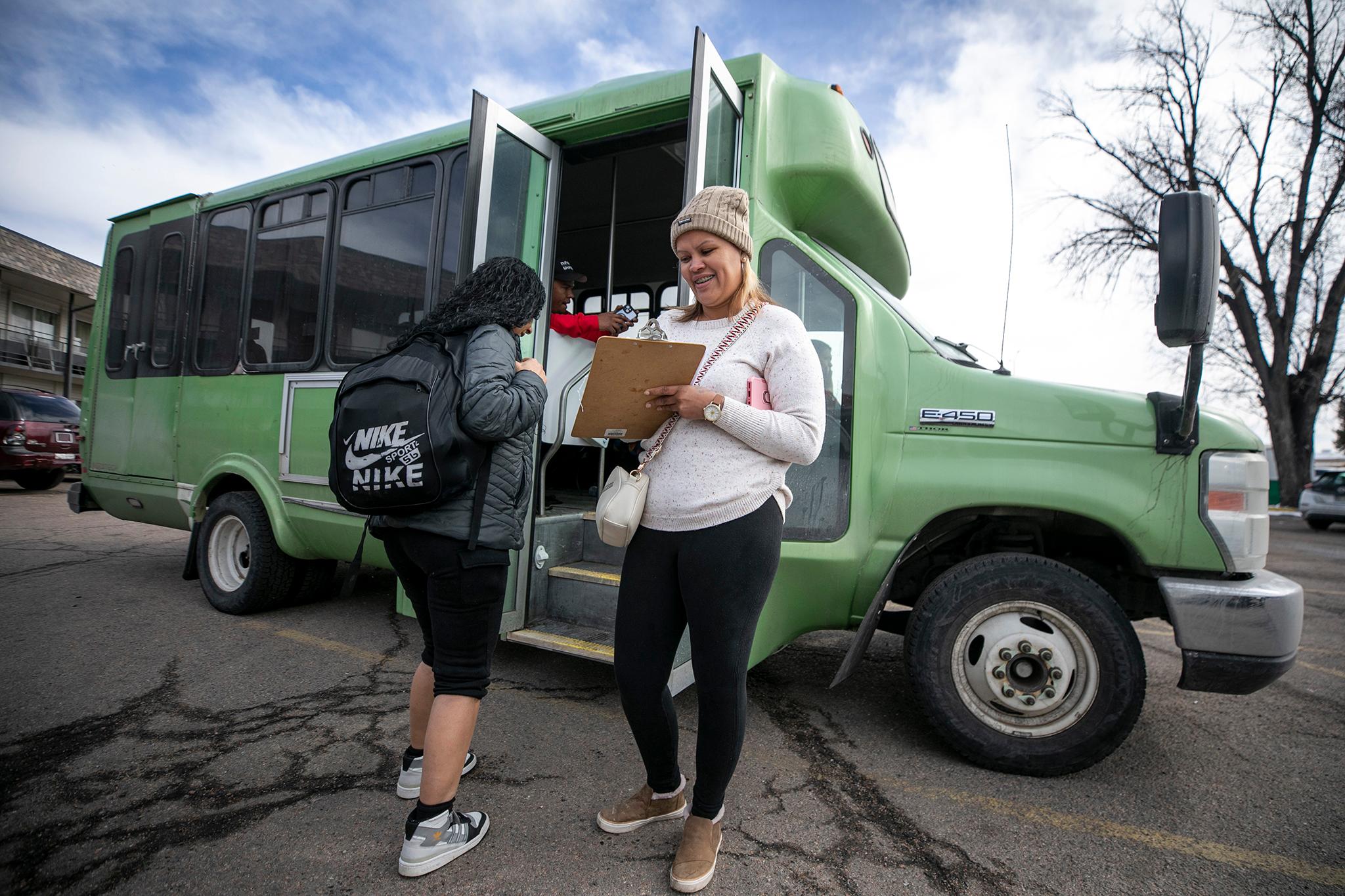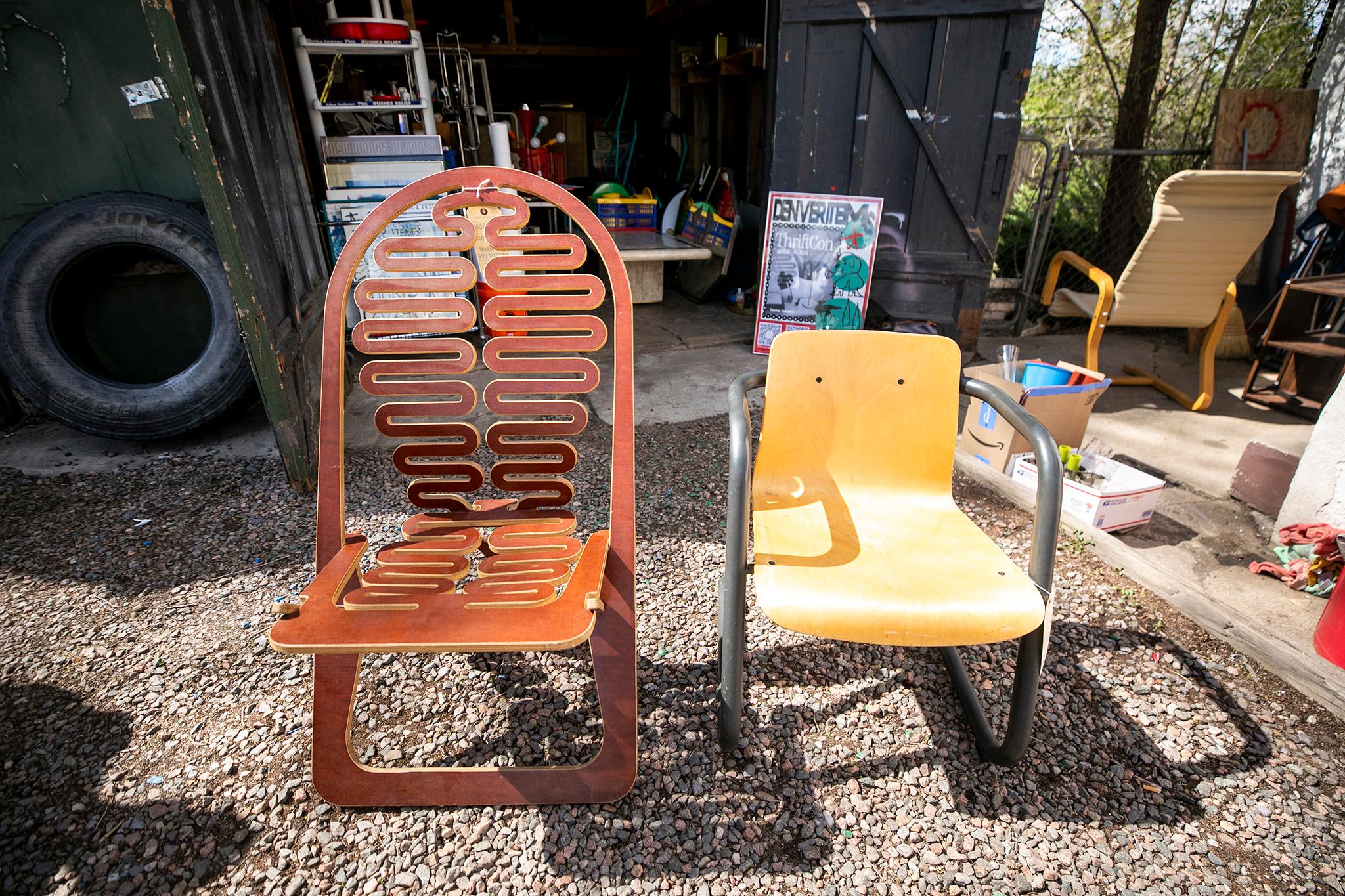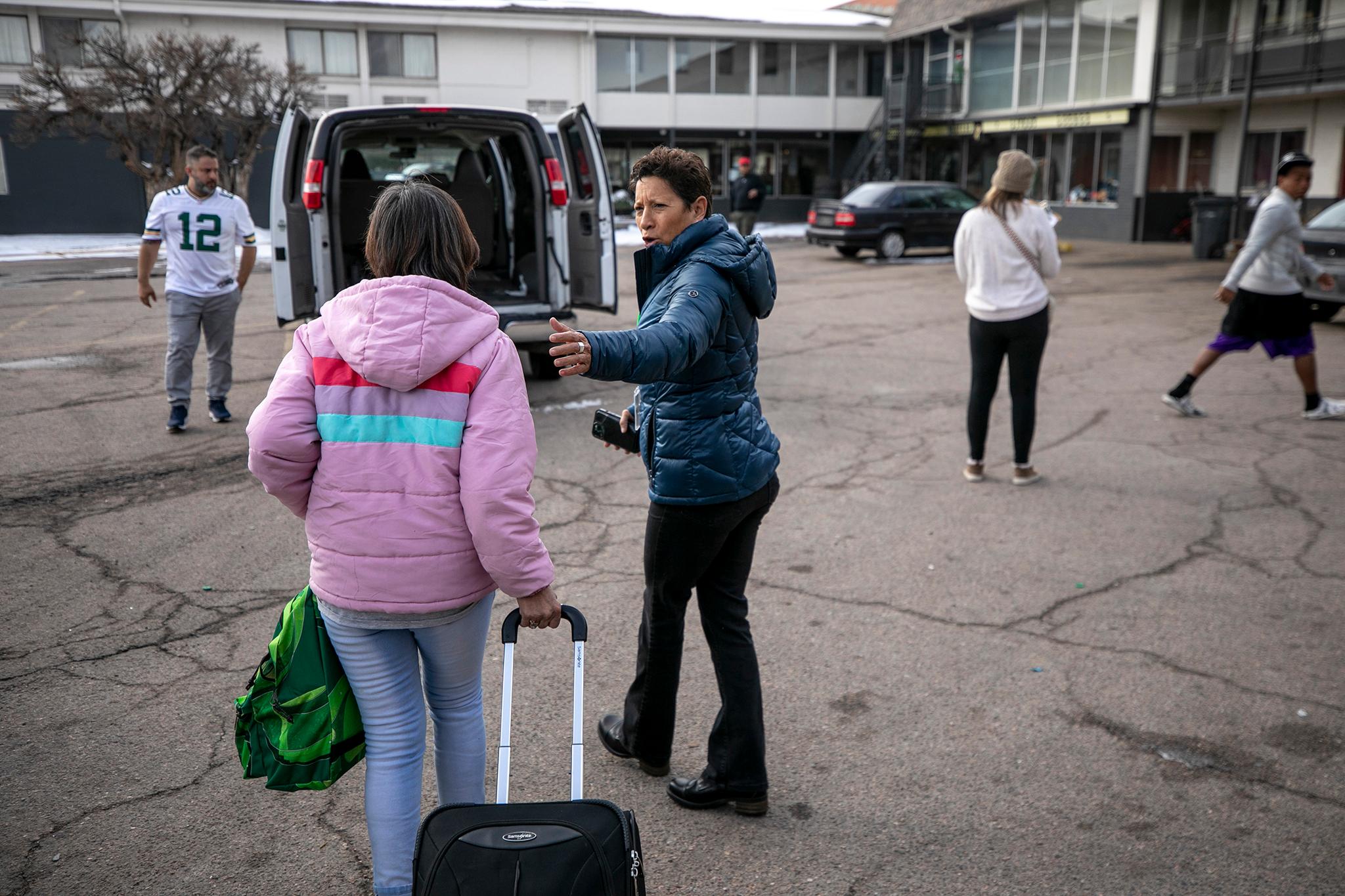The way Jill Locantore describes her childhood in Colorado Springs in the 1970s sounds -- please forgive the pun -- completely pedestrian. Like many Coloradans both then and now, hers was a car-dependent family. Their chariot was an enormous Oldsmobile.
"We used to joke about how you could probably hide at least three dead bodies in the trunk of that tank," she said, adding: "As soon as you turned 16 you got your driver's license. Because you had to drive to get anywhere."
Her parents gifted her the "tank" for her college years near Los Angeles. She couldn't afford to bring it to graduate school in a very different city -- Toronto -- in 1997. But in that city, with its extensive public transit system and walkable neighborhoods, Locantore didn't miss the Olds at all.
Gradually, Locantore pieced together why that was the case -- and the revelation shaped her career.
"I realized that was not an accident," she said. "People had made policy decisions that created that environment that let me, as a very low-income person, have a very high quality of life. And I wanted to help make that true for other people too."
Now, more than two decades later, the 48-year-old has won a successful -- and ambitious -- campaign that she hopes will help bring a similar quality of life to Denver, where she's lived since 2006. Voters earlier this month passed the ballot initiative that will raise tens of millions of dollars every year through new property fees specifically for sidewalk improvements.
The ordinance, sponsored and written by her organization, the Denver Streets Partnership, could be one of the most important wins for car-free transportation in the city's history because it gives its government money and a mandate to match its long-standing plans to improve walkability. The city currently has 300 miles of missing sidewalks and 830 miles of sidewalks too narrow to meet ADA standards.
National pedestrian advocates also hope Denver's vote will inspire other American cities.
"Not only should [Denverites] be proud of what they've done, but I think people need to look at this," said Mike McGinn, a former mayor of Seattle and current executive director of America Walks, a national nonprofit that promotes policies that advance walkability.
Most local and state governments run ballot initiatives that seek to raise money for all kinds of transportation -- mostly highways and perhaps public transportation, McGinn said. A funding measure specifically for sidewalks is rare, he added.
"The public really wants walkable communities," he said. "They'll vote for it if given a shot. They're just not given the shot very often."
Denver's rough sidewalk situation is common across the U.S.
Local governments across the U.S. have long taken responsibility for building and maintaining streets. But studies have found they are far more likely to shunt sidewalks off on property owners. That's been the case in Denver for well over a century.
"Over the last 125 years, the sidewalk system has been built and paid for by individual property owners, one project at a time," a consortium of city officials and advisors wrote in Denver's 2004 Pedestrian Master Plan.
That approach has resulted in American cities -- Denver included -- where the shape and quality of sidewalks vary from block to block. Neighborhoods that pre-date the widespread adoption of personal vehicles tend to have wider sidewalks, for example, while later-era streets may have narrow walks or none at all.
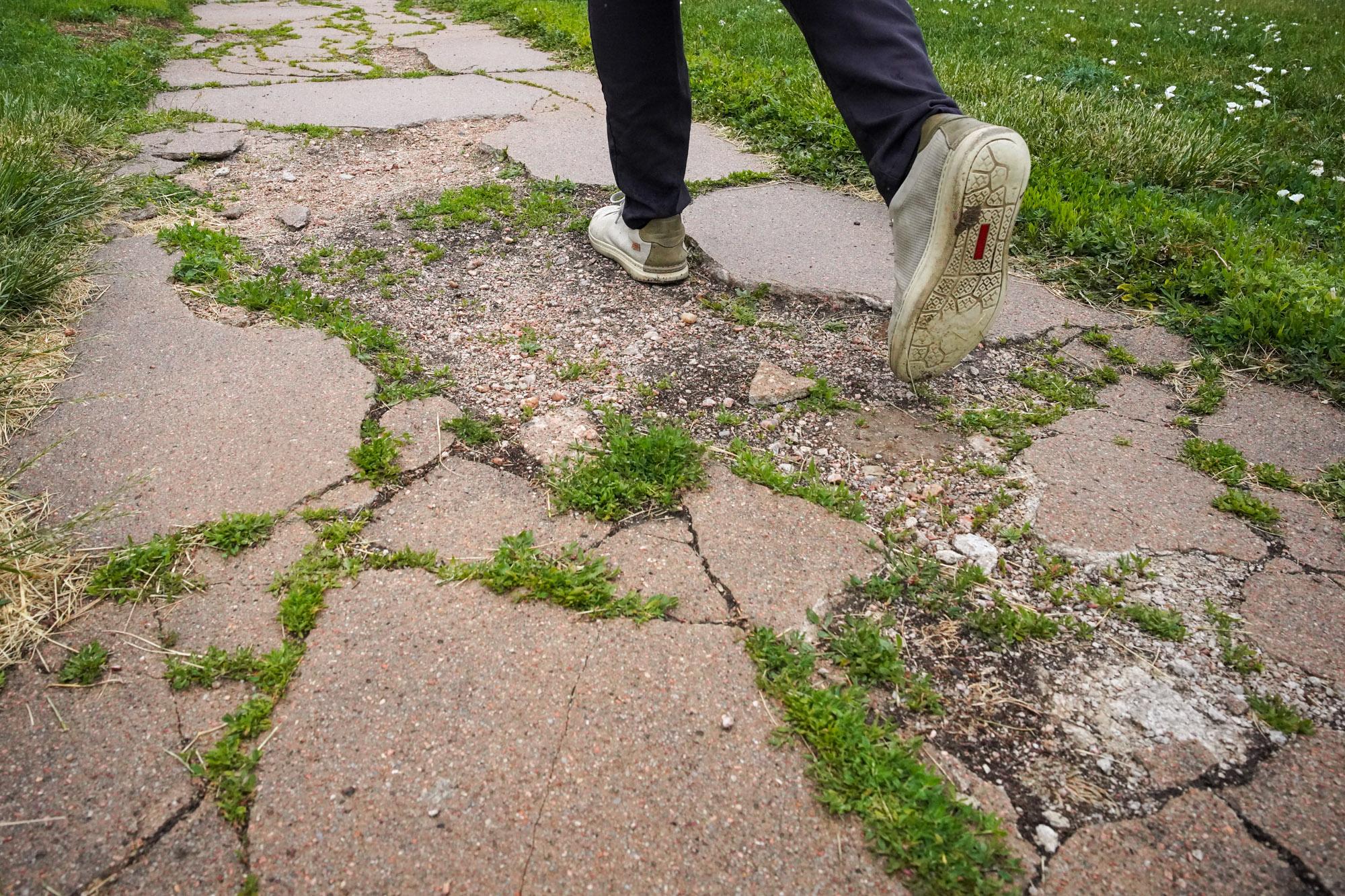
Sidewalk repair policies that put the onus on property owners are harder to shoulder for low-income households and are rarely enforced, said Greg Rowangould, an associate professor at the University of Vermont and director of the college's Transportation Research Center who's studied sidewalk funding models.
"It was kind of silly that we had to do a study like this to just point out the obvious," he said, adding: "Pretty much anything would be better than the current way of paying for sidewalks."
In Denver, the city government has, for at least the last two decades, emphasized active transportation modes like public transit, walking and cycling and has eyed a bigger role in sidewalk repair and construction. The idea for a new property fee and transfer of responsibility to the city dates back to its 2004 Pedestrian Master Plan.
But the programs the city ended up pursuing were more modest. One program started about five years ago aimed to inspect and repair sidewalks neighborhood-by-neighborhood -- and was pilloried by the city auditor in 2020 for its lack of affordability for homeowners and slow pace.
Locantore's been watching the city's efforts and dreaming much bigger.
After a stint as a regional government planner in Washington, D.C. and Denver, Locantore moved into advocacy at the pedestrian group WalkDenver. She took over as leader of the Denver Streets Partnership in 2020, which formed when WalkDenver and Bicycle Colorado merged.
WalkDenver launched a "Denver Deserves Sidewalks" online petition in 2015 that contained the skeleton of the 2022 ballot initiative. Locantore relentlessly prodded Denver officials to beef up plans and budgets, eventually earning the title of "the city's foremost bear-poker on sustainable transportation issues" in this publication.
"I'm a very stubborn person," Locantore said with a laugh. "I personally have been working on [the sidewalk issue] for seven years and I just was not willing to give up."
Those years of pushing led to "incremental" wins. One crucial victory, Locantore said, was her organization's push for the city to explicitly prioritize pedestrians over cars in design guidelines that shape future infrastructure projects.
Collectively, Locantore said, those wins laid the groundwork for the sidewalk initiative. And they illustrate her effectiveness, too.
"Jill's a warrior," said City Councilman Paul Kashmann, who represents south Denver and has taken an interest in the city's sidewalk efforts. "Jill's done more than anyone else that I know to keep her thumb on government to continue to move forward, to try to create a more-connected, better-maintained pedestrian infrastructure."
Locantore's group was particularly effective because it was led by a trained city planner and professional advocate who understands both how government works and how to influence it, Kashmann said.
"Anyone who walks in Denver couldn't ask for a better friend than Jill," he said.
When the critical 2020 audit didn't "light a fire" under the mayor's administration or City Council, Locantore said, her group decided to go to the ballot themselves with Denver Initiated Ordinance 307. The group, with some pro bono help from industry professionals, borrowed heavily from many of the city's own plans from the previous 20 years in formulating its own.
"We were like, 'It's been 20 years. Let's do this. Let's get it done.' And that's what we did," she said.
Locantore's team built a coalition of some 50 groups, including neighborhood, health, environmental and disability advocacy organizations, to support the "Denver Deserves Sidewalks" campaign. She and her small staff organized volunteers to collect signatures to get the initiative on the ballot and then to urge "yes" votes during the campaign's home stretch. Locantore donated $24,000 of her own money to the campaign.
They received little support from elected officials, some of whom objected to the fee structure that will land especially hard on some property owners. Even Kashmann didn't endorse it, citing concerns with the fees and Locantore's "more than optimistic" timeline.
In the end, the lack of endorsements from elected leaders didn't matter. The measure passed with more than 55 percent of the vote.
Locantore says it's the biggest win of her career. City officials will soon figure out how to implement the initiative.
The City Council may change the ordinance six months after the vote. Locantore said she's fine with small adjustments, like carve-outs for property owners who would otherwise be hit with $1,000-plus annual fees.
Another big outstanding question is how long it will take for the city to achieve the initiative's goal of a complete sidewalk network and how much it will cost. The city's own pre-vote analysis cast serious doubt on Locantore's $850 million cost estimate and aggressive nine-year timeline. The city will soon begin work on implementation plans and analysis that should firm up estimates, a city spokeswoman said.
Even if the full buildout takes longer than she hopes, Locantore said it'll still be faster than the 400-year timeline the city had been on leading up to the vote. Kashmann agreed, calling that "unacceptable."
"I think we'll come up with a great plan," he said.
The initiative's passing shows a significant number of residents have an appetite for non-car-oriented transportation, she said, and will enhance the city's percolating plans for more bike lanes and bus lanes across the city.
Locantore said the vote shows that many Denver residents, after being motorists first for decades, want a life closer to the car-free one she's led since ditching the family's Oldsmobile in 1997. They want a city where a car isn't the price of admission to safely live and move, she said.
"I would love it if I never again had to see a person in a wheelchair or a parent with a stroller in the streets struggling with oncoming traffic," she said. "I would love it if everybody in Denver felt like if they wanted to walk somewhere, they could do so."
Editor's note: This post has been corrected to reflect that Locantore's coalition was made up of 50 groups.

